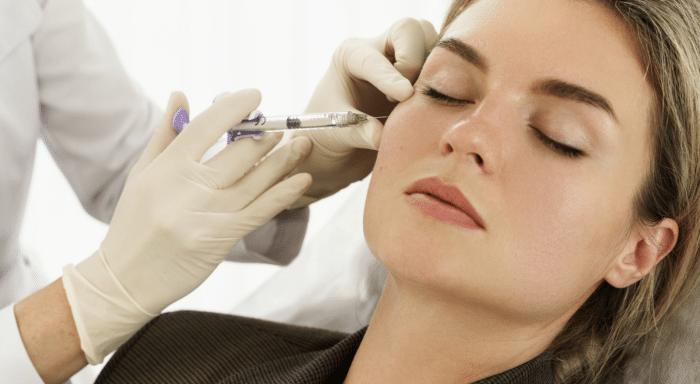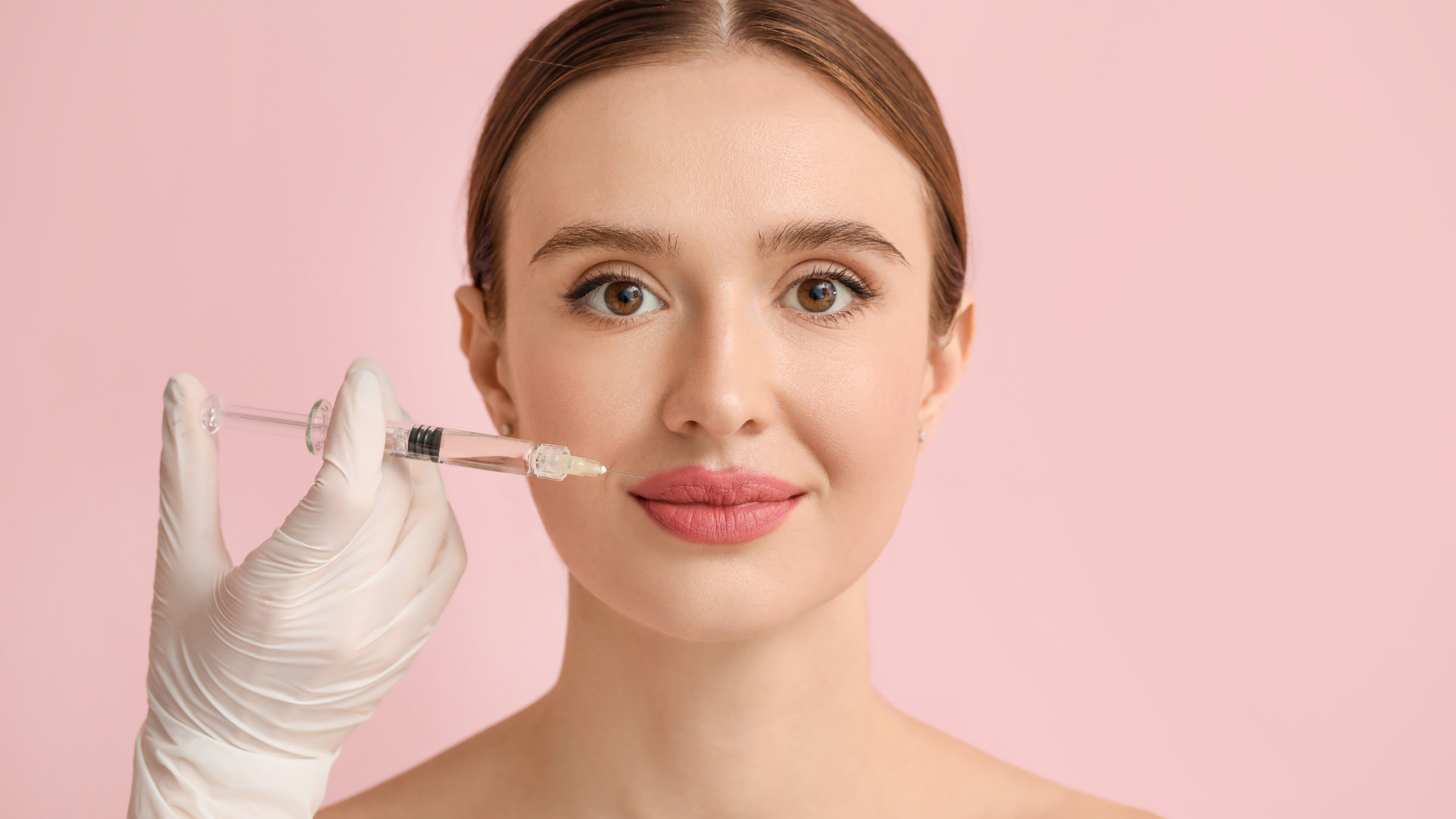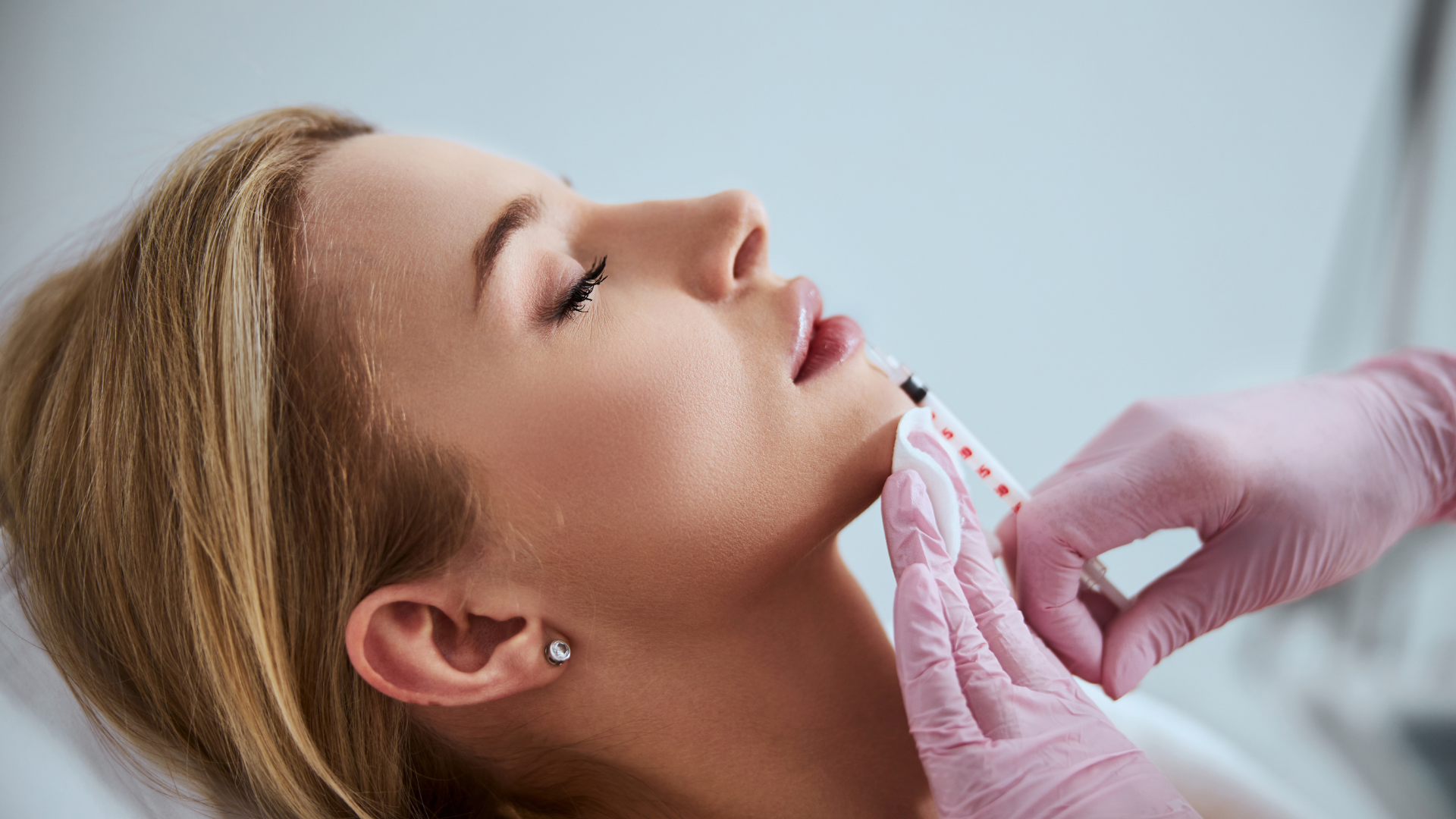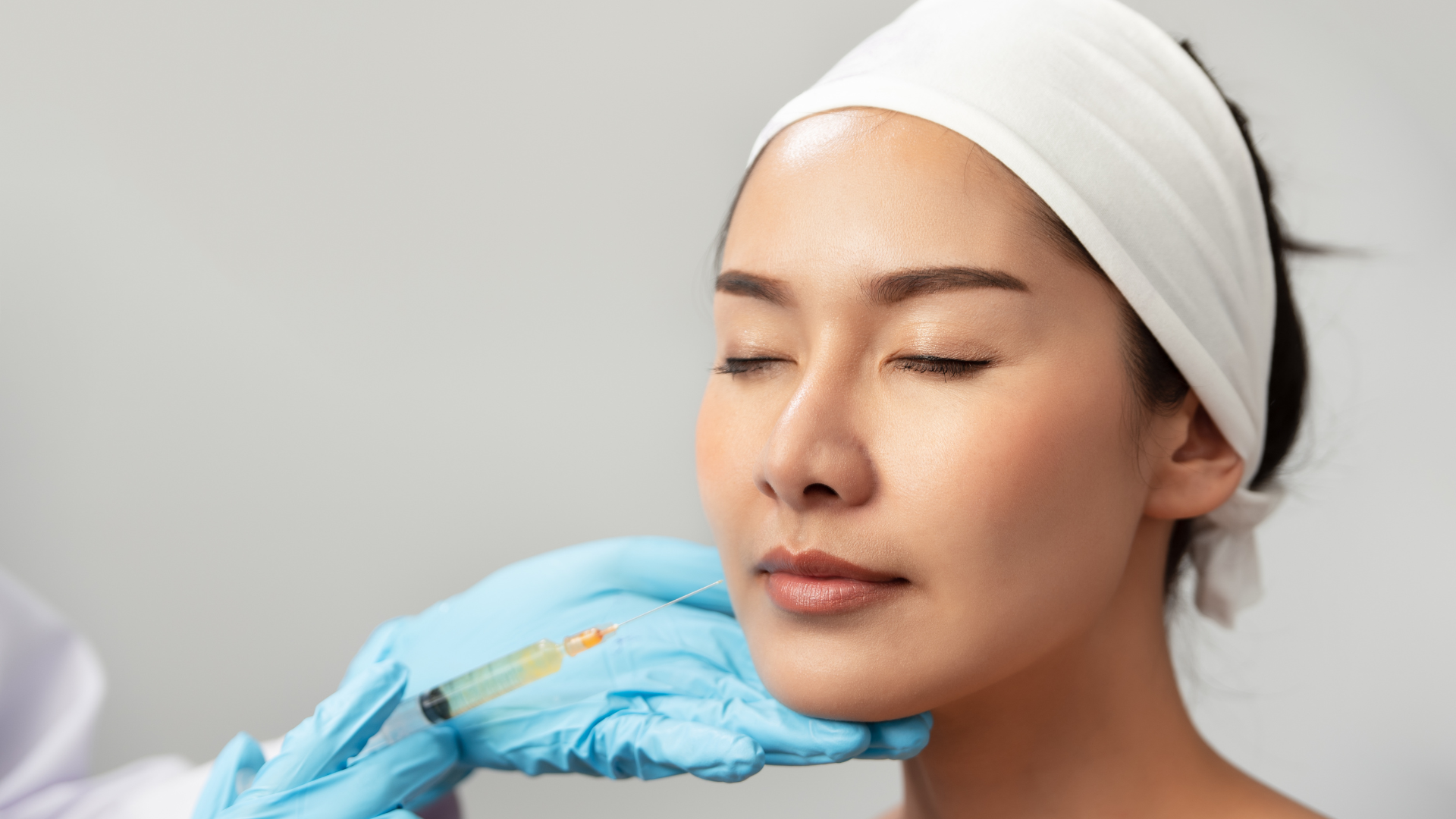
Did you know that dermal fillers go beyond mere wrinkle correction? They can plump lips, smooth creases, and even sculpt jawlines. But when choosing the right path for your rejuvenation journey, two heavyweights stand out: Ellanse and Radiesse.
Ellanse, an innovative filler, stimulates collagen production using PolyCaproLactone (PCL). Its “bio-stimulation” approach offers longer-lasting results than traditional hyaluronic acid-based fillers. On the other hand, Radiesse triggers collagen growth with its tiny calcium hydroxyapatite (CaHA) microspheres. While both serve similar purposes, they differ in subtle ways.
In this article, we will compare Ellanse and Radiesse by delving into their mechanisms, suitability for different areas, and the expertise needed for optimal results.
Key Takeaways
- Ellanse can last up to 4 years and is excellent for shaping the face, but it’s unavailable in the U.S.
- Radiesse is FDA-approved. It helps skin make new collagen and can be used on faces, necks, hands, and more.
- Both fillers are safe with minor side effects like swelling and redness. They help skin look smoother and younger.
- Choosing the suitable filler depends on what part of the body you want to improve and how long you want results to last.
About: Doctor Medica is your trusted supplier of top-quality dermal fillers, viscosupplements, and more for your medical practice. We offer genuine products from leading brands at the lowest prices in the market. If you’re looking to buy Ellanse for your practice, contact the Doctor Medica today.
Introduction to Ellanse and Radiesse

Dermal fillers are essential for skin sculpting and contouring, helping reduce wrinkles and restore facial volume. Two popular types, Ellanse and Radiesse, act as collagen biostimulators, meaning they stimulate the skin to produce new collagen, which keeps the skin looking firm and youthful.
Radiesse is known for more than just filling wrinkles; when diluted with water, it can also rejuvenate the skin. Doctors use it on the neck, hands, body, and even acne scars. Ellanse stands out by lasting up to four years, making it the longest-lasting filler available today. It is ideal for those seeking long-term results without frequent treatments.
Choosing the right filler for aesthetic treatments is crucial and can significantly impact the success and satisfaction of the outcome. Understanding the safety profiles and factors like Radiesse or Ellanse FDA approval status is also essential in making an informed decision.
Composition and Mechanism of Action of Ellanse and Radiesse
Ellanse stands out in cosmetic dermatology due to its unique makeup of Polycaprolactone (PCL), a bioresorbable material that stimulates collagen production in the skin. When injected, Ellanse provides immediate volume and contouring effects due to the gel carrier. At the same time, the PCL microspheres gradually break down over time, stimulating the body’s natural collagen production to maintain long-term results.
Meanwhile, Radiesse is a unique filler made of calcium hydroxylapatite (CaHA) microspheres suspended in a water-based gel carrier. CaHA is a naturally occurring substance in the body, primarily found in bones. When injected, Radiesse provides immediate volume and lifting effects. The CaHA particles stimulate collagen production as the gel carrier is absorbed, providing extended results as the newly formed collagen maintains the skin’s structure and firmness.
When comparing Ellanse and Radiesse, they differ from each other due to their unique compositions:
- Both fillers encourage collagen production but do so in slightly different ways.
- Ellanse’s tunability and suitability across various facial areas make it versatile.
- Radiesse excels when immediate volume is needed, especially for hands or deeper lines around the mouth.
Clinical Efficacy of Ellanse and Radiesse

Ellanse is renowned for its dual-action approach, offering immediate and long-term benefits. Clinical studies have demonstrated its effectiveness in various aesthetic treatments, such as the following:
- Facial Volume Restoration: Ellanse is excellent for restoring lost volume in areas like cheeks, temples, and jawlines. Its bio-stimulatory effect ensures gradual collagen production, leading to natural-looking results.
- Smoothing Wrinkles and Folds: Ellanse effectively minimizes nasolabial folds, marionette lines, and other facial wrinkles.
- Hand Rejuvenation: Ellanse can rejuvenate aging hands by improving volume and texture.
Radiesse is also highly effective in various aesthetic treatments like the following:
- Immediate Volume Enhancement: Radiesse provides instant volume due to its gel base. It’s ideal for deeper lines and folds.
- Hand Augmentation: Radiesse is commonly used for hand rejuvenation, addressing volume loss and veiny appearance.
- Chin and Jawline Contouring: Radiesse can enhance chin projection and define jawlines.
Below is an overview of the clinical efficacy of each treatment:
| Criteria | Ellanse | Radiesse |
| Longevity of Results | Up to 4 years | 12-18 months |
| Collagen Stimulation | Improves skin texture and produces better results by stimulating collagen | Stimulates collagen production over nine months |
| Treatment Areas | Versatile for multiple facial regions | Especially effective for hands and deeper lines |
Safety Profiles
An essential safety feature of Ellanse is that it cannot be dissolved with hyaluronidase, which might raise concerns among professionals accustomed to using this enzyme to address complications with other fillers. Importantly, there have been no reports of blindness resulting from vascular occlusion with Ellanse, providing significant reassurance for practitioners and patients.
The absence of severe side effects, such as blindness due to vascular blockage, underscores Ellanse’s relative safety when used by skilled hands. This emphasizes the importance of medical professionals being well-versed in facial anatomy and injection techniques when using long-lasting fillers like Ellanse.
Radiesse, which is FDA-approved, stands out for its versatility, including use on the neck, hands, body, and even acne scars. Its safety profile is well-regarded among medical professionals. However, one key consideration is that reversing the effects of Radiesse is not straightforward if adverse reactions occur. Therefore, careful consideration should be given before choosing Radiesse for clients seeking minimal risk in aesthetic enhancements.
Practical Considerations for Ellanse and Radiesse

Treatment Areas
- Ellanse: Primarily used for facial rejuvenation, Ellanse effectively restores lost volume and sculpts facial contours. It addresses deep wrinkles, nasolabial folds, and overall facial volume loss. Its unique polycaprolactone (PCL) composition is ideal for long-term facial enhancements.
- Radiesse: Known for its versatility, Radiesse is used not only for facial treatments but also for body contouring, hand rejuvenation, and improving the appearance of acne scars. Thanks to its calcium hydroxylapatite (CaHA) composition, it can address fine lines on the face, restore volume to the hands, and refine the neckline.
Longevity of Results
- Ellanse: One of the longest-lasting dermal fillers available, Ellanse’s effects can last from one to four years, depending on the specific variant used. This makes it a cost-effective option for patients seeking extended results without frequent touch-ups.
- Radiesse: While not as long-lasting as Ellanse, Radiesse provides significant longevity with results typically lasting 12 to 18 months. Its ability to stimulate collagen production ensures sustained improvement in skin firmness and elasticity.
Patient Satisfaction
- Ellanse: High satisfaction rates are reported due to its dual-action approach of immediate volumizing and long-term collagen stimulation. Patients appreciate the extended duration of the effects and the natural-looking results it provides.
- Radiesse: Also enjoys high patient satisfaction, particularly for its versatility and immediate results. Patients value its ability to restore significant volume and effectiveness in various treatment areas.
Potential Side Effects
Ellanse and Radiesse are generally well-tolerated, but they have potential side effects. Ellanse commonly causes swelling, redness, and bruising at the injection site, which is typically mild and resolves within a few days. A critical consideration is that Ellanse cannot be dissolved with hyaluronidase, making it harder to reverse any undesirable outcomes. Thus, precise injection techniques by skilled practitioners are required.
Radiesse shares similar side effects, including swelling, redness, and injection site pain, which usually subside quickly. Rarely, infections can occur, necessitating prompt medical attention. Understanding these potential side effects is essential for ensuring patient safety and satisfaction with treatment outcomes.
Conclusion
Choosing between Ellanse and Radiesse depends on individual needs and preferences. Ellanse offers long-lasting results of up to four years with its PCL-based formulation, although it is not approved for use in the U.S. However, Radiesse is FDA-approved and is versatile for treating areas beyond the face, such as the hands and neck.
Both fillers are excellent for rejuvenating and smoothing the skin, but the right choice varies based on personal circumstances. Consulting with a knowledgeable professional experienced with both products can help ensure the best possible results.
FAQs
1. What’s the difference between Ellanse and Radiesse?
Ellanse and Radiesse, while both effective for skin treatments, have distinct properties. The key differences lie in their composition, longevity of results, and areas they are best suited for.
2. Is one better than the other – Ellanse or Radiesse?
Neither is universally better. It depends on individual needs. If you seek long-lasting effects, consider Ellanse. But if you want immediate results, then perhaps Radiesse aligns better with your goals.
3. Can I switch from using Ellanse to Radiesse?
Though it is okay to switch fillers, it’s important to remember that each product has unique traits, so consult with a professional before making changes.
4. Are there any side effects when using either Ellanse or Radiesse?
Like all treatments, potential side effects exist. Common ones include swelling or redness at injection sites. Always discuss these possibilities with a healthcare provider first.
References
Ellanse vs Radiesse: Decoding the Best Dermal Fillers. Dr Sheila. Published June 23, 2024. https://drsheila.co.uk/ellanse-vs-radiesse-decoding-the-best-dermal-fillers/
De Melo F, Nicolau P, Piovano L, et al. Recommendations for volume augmentation and rejuvenation of the face and hands with the new generation polycaprolactone-based collagen stimulator (Ellanse). Clinical, Cosmetic and Investigational Dermatology. 2017;Volume 10:431-440. doi:10.2147/ccid.s145195
Jacovella P. Use of calcium hydroxylapatite (Radiesse<sup>®</sup>) for facial augmentation. Clinical Interventions in Aging. 2008;Volume 3:161-174. doi:10.2147/cia.s2065
Related Articles
Joanna Carr
Euflexxa Side Effects – The Complete List
Explore the full list of Euflexxa side effects, from common injection-site reactions to rare but serious complications. Stay informed before starting ...
Joanna Carr
Mounjaro FDA Approval Status
Get the latest on Mounjaro’s FDA approval status, including indications for type 2 diabetes, weight management, and updates on regulatory milestones.
Joanna Carr
Revive and Rejuvenate: Jalupro’s Role in Skin Renewal
Experience skin renewal with Jalupro from Doctor Medica. Explore rejuvenating solutions for a refreshed appearance.


